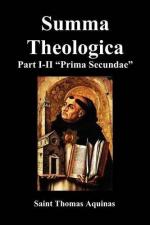Now this purification of a leper was twofold: for, in the first place, he was declared to be clean; and, secondly, he was restored, as clean, to the society of men and to the worship of God, to wit, after seven days. At the first purification the leper who sought to be cleansed offered for himself “two living sparrows . . . cedar-wood, and scarlet, and hyssop,” in such wise that a sparrow and the hyssop should be tied to the cedar-wood with a scarlet thread, so that the cedar-wood was like the handle of an aspersory: while the hyssop and sparrow were that part of the aspersory which was dipped into the blood of the other sparrow which was “immolated . . . over living waters.” These things he offered as an antidote to the four defects of leprosy: for cedar-wood, which is not subject to putrefaction, was offered against the putrefaction; hyssop, which is a sweet-smelling herb, was offered up against the stench; a living sparrow was offered up against numbness; and scarlet, which has a vivid color, was offered up against the repulsive color of leprosy. The living sparrow was let loose to fly away into the plain, because the leper was restored to his former liberty.
On the eighth day he was admitted to divine worship, and was restored to the society of men; but only after having shaved all the hair of his body, and washed his clothes, because leprosy rots the hair, infects the clothes, and gives them an evil smell. Afterwards a sacrifice was offered for his sin, since leprosy was frequently a result of sin: and some of the blood of the sacrifice was put on the tip of the ear of the man that was to be cleansed, “and on the thumb of his right hand, and the great toe of his right foot”; because it is in these parts that leprosy is first diagnosed and felt. In this rite, moreover, three liquids were employed: viz. blood, against the corruption of the blood; oil, to denote the healing of the disease; and living waters, to wash away the filth.
The figurative reason was that the Divine and human natures in Christ were denoted by the two sparrows, one of which, in likeness of His human nature, was offered up in an earthen vessel over living waters, because the waters of Baptism are sanctified by Christ’s Passion. The other sparrow, in token of His impassible Godhead, remained living, because the Godhead cannot die: hence it flew away, for the Godhead could not be encompassed by the Passion. Now this living sparrow, together with the cedar-wood and scarlet or cochineal, and hyssop, i.e. faith, hope and charity, as stated above (ad 5), was put into the water for the purpose of sprinkling, because we are baptized in the faith of the God-Man. By the waters of Baptism or of his tears man washes his clothes, i.e. his works, and all his hair, i.e. his thoughts. The tip of the right ear of the man to be cleansed is moistened with some the blood and oil, in order to strengthen his hearing against harmful words; and the thumb and toe of his right hand and foot are moistened that his deeds may be holy. Other matters pertaining to this purification, or to that also of any other uncleannesses, call for no special remark, beyond what applies to other sacrifices, whether for sins or for trespasses.




